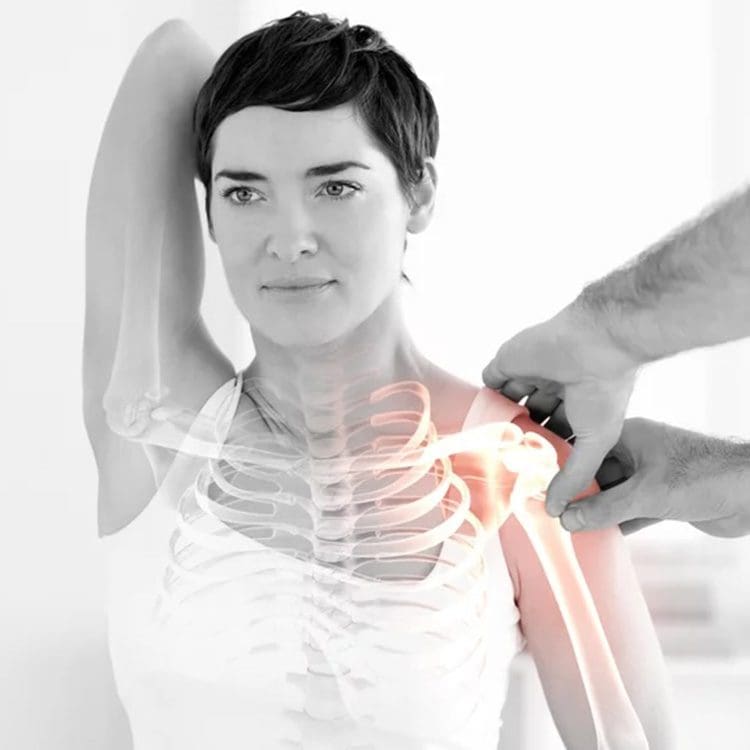Welcome to the world of manual osteopathy, a therapeutic practice that holistically addresses the interconnectedness of your body’s systems.
If you’re preparing for your first visit to a manual osteopath, you might have some questions or feel uncertain.
This article is written to help guide you through what to expect and how to prepare, ensuring a comfortable and beneficial experience.
Understanding Manual Osteopathy
Manual osteopathy is an integrative and holistic approach to healthcare that focuses on the manual treatment of the body’s structures and tissues. It is grounded in the philosophy that all body systems are interconnected and function as a unit.
This means that issues in one area of the body can affect an individual’s overall health and well-being.
Core Principles of Manual Osteopathy
- The Body as an Integrated Unit: Osteopathy is based on the principle that the body is an integrated unit. This means that the body’s systems (muscular, skeletal, nervous, circulatory, and lymphatic) work in harmony. An imbalance or dysfunction in one system can impact others, leading to pain, discomfort, or illness.
- The Body’s Natural Ability to Heal: A central tenet of osteopathy is the belief in the body’s inherent ability to heal itself. Osteopathic treatment aims to support and enhance this natural healing process by restoring proper function and balance to the body.
- Structure and Function are Interrelated: In osteopathy, there’s a focus on the interrelationship between the body’s structure (anatomy) and function (physiology). Osteopaths believe that correcting structural problems can help improve the body’s function.
Treatment Techniques in Manual Osteopathy
Manual osteopaths use various techniques to alleviate pain, improve mobility, and optimize health. These include:
- Soft Tissue Manipulation: Massaging and stretching the muscles, ligaments, and fascia to release tension, improve circulation, and enhance tissue health.
- Osteopathic Articulation: A technique where joints are gently moved through their natural range of motion to improve mobility and function.
- Cranial Osteopathy: A subtle and gentle form of osteopathic treatment that involves the manipulation of the bones in the head, spine, and pelvis. It’s believed to affect the central nervous system and is often used to treat various conditions.
- Visceral Manipulation: This involves gentle manual therapy to the organs (viscera) of the body, aiming to release restrictions and improve the function of the organs.
- Myofascial Advance Remodelling: This technique targets the myofascial tissues – the dense, tough tissue surrounding and covering all your muscles and bones. Myofascial advanced remodelling involves applying gentle, sustained pressure to the myofascial connective tissue to eliminate pain and restore motion. This method is particularly effective in treating myofascial pain syndrome, a chronic pain disorder caused by sensitivity and tightness in your myofascial tissues.
- Manual Lymphatic Drainage: This gentle massage technique is designed to stimulate the movement of lymph fluids around the body. The lymphatic system is crucial for maintaining a strong immune system and helps in removing toxins from body tissues. Manual lymphatic drainage can be particularly beneficial for reducing swelling, improving lymphatic circulation, and enhancing the immune response. It is often used post-surgery or to treat lymphedema, a condition characterized by swelling due to a compromised lymphatic system.
Benefits of Manual Osteopathy
Manual osteopathy can offer several benefits, including:
- Relief from musculoskeletal pain (such as back pain, neck pain, and headaches).
- Enhanced mobility and joint function.
- Improved circulation and lymphatic drainage.
- Reduction in stress and tension.
- Overall improvement in health and well-being.
1. Before Your Appointment:
Preparing for your first session is straightforward. Here are a few tips:
- Wear comfortable clothing that allows for easy movement.
- Avoid heavy meals right before the appointment.
- Bring any relevant medical records or reports.
- Prepare a list of symptoms, concerns, and health goals.
2. Initial Consultation:
Your first visit will typically start with a consultation. This is a time for the osteopath to understand your health history, current issues, and overall wellness goals.
Be open and honest – this information will help tailor the treatment to your needs.
3. Assessment:
After the consultation, the osteopath will perform a physical assessment. This may include observing your posture, flexibility, and movements.
The assessment is crucial in identifying tension, imbalance, or reduced mobility areas.
4. The Treatment:
The core of the visit is the manual therapy. Techniques may include gentle stretching, pressure application, and mobilization of joints.
Each movement is designed to promote healing and balance within your body. Communication is key; if anything feels uncomfortable, let your osteopath know.
5. Post-Treatment Guidance:
After the session, your osteopath might offer advice on exercises, posture, or lifestyle changes to support your treatment. This guidance is invaluable in extending the benefits of your session and improving your overall well-being.
6. Follow-Up Appointments:
Manual osteopathy often requires multiple sessions for the best results. Your osteopath will discuss a treatment plan, including the frequency and number of follow-up visits.
Manual Osteopathic Therapy FAQ's
In British Columbia, most extended healthcare plans cover manual osteopathic therapy services. In addition, many manual osteopathic therapists in the province offer direct billing options for patients with insurance coverage, which means that the therapist will bill the insurance company directly on the patient’s behalf.
This can simplify the payment process and reduce out-of-pocket expenses for the patient. First, however, it is important to check with your specific insurance provider and manual osteopathic therapist to confirm if direct billing is available and what the process entails.
Manual osteopathic therapy is a type of manual therapy that aims to treat the musculoskeletal system, restore proper function to the body, and improve overall health. This therapy uses manual techniques such as stretching, massage, and manipulation to target specific areas of the body that are causing pain or discomfort.
Manual osteopathic therapy focuses on the musculoskeletal system and its interrelation with the body’s organs and systems. This holistic approach sets it apart from other forms of treatment that may focus only on treating specific symptoms or conditions.
Manual osteopathic therapy can help with various conditions, including chronic pain, headaches, digestive issues, respiratory problems, and musculoskeletal injuries. It is also commonly used to address stress, tension, and other general health concerns.
your posture, movement, and other physical factors that may be contributing to your symptoms.
They will then use various manual techniques, such as gentle pressure, stretching, and manipulation, to help release tension, improve the range of motion, and restore proper function to the affected area.
You may feel some discomfort or pressure during the therapy, but it should not be painful.
Manual osteopathic therapy should not be painful. The therapist will use gentle techniques and adjust the pressure based on your comfort level. If you experience any pain during the therapy, you should communicate with your therapist immediately so they can adjust the treatment accordingly.
The number of sessions needed can vary depending on the severity of your condition and other factors such as age, overall health, and response to treatment.
Some people may see results after just one session, while others may need multiple sessions to achieve their desired results. Your therapist can provide a more specific estimate based on your individual needs.
Yes, manual osteopathic therapy can be combined with other forms of therapy for a more comprehensive approach to treatment. Your therapist can work with you to develop a treatment plan incorporating manual osteopathic therapy and other therapies, such as physical therapy or chiropractic care, as needed.
Manual osteopathic therapy is generally considered safe for people of all ages and health conditions. Still, discussing any concerns with your therapist before starting treatment is essential. Some conditions, such as certain types of cancer or recent surgeries, may contraindicate manual osteopathic therapy.
Your Manual Osteopathic Therapist will assess your situation to determine if manual osteopathic therapy is appropriate.
Like any form of therapy, there are potential risks associated with manual osteopathic therapy. For example, some people may experience temporary discomfort or soreness after a session. In rare cases, manual therapy may cause a new injury or worsen an existing one. Your therapist will discuss potential risks and work with you to minimize them.
Manual osteopathy, chiropractic, and physiotherapy all aim to treat musculoskeletal conditions and improve overall physical health. While there are similarities in the techniques used by these professionals, there are also some key differences.
Manual osteopathy is a hands-on therapy that uses gentle manual techniques to address imbalances and restrictions in the body’s musculoskeletal, nervous, and circulatory systems. Manual osteopaths use a whole-body approach to assess and treat the underlying causes of pain and dysfunction, intending to restore the body’s natural ability to heal. Treatment may include joint mobilization, soft tissue techniques, and exercise prescription.
Chiropractic is a healthcare profession that focuses on diagnosing, treating, and preventing disorders of the musculoskeletal and nervous systems.
Chiropractors use manual techniques to manipulate the spine and other joints in the body, aiming to improve mobility, reduce pain, and restore overall function. Chiropractors also use other treatment modalities such as therapeutic exercise, electrical stimulation, and ultrasound.
Physiotherapy is a healthcare profession that focuses on assessing, diagnosing, and treating physical impairments, disabilities, and pain.
Physiotherapists use various manual techniques, exercise prescriptions, and other modalities such as heat, ice, and electrical stimulation to treat different conditions affecting the musculoskeletal, neurological, and cardiorespiratory systems. Physiotherapy aims to restore function, reduce pain, and improve overall physical health.
Overall, while all three modalities use manual techniques, they differ in their specific approach, methods used, and areas of focus. Therefore, it is important to seek a practitioner with the appropriate training and credentials in the type of therapy you desire.
A1. It is generally gentle and shouldn’t cause pain. If you experience discomfort, inform your osteopath immediately.
It’s not usually necessary. Wear comfortable clothing that doesn’t restrict movement.
A4. Many people find relief from chronic pain through osteopathic treatments, though individual experiences vary.
This depends on your individual condition and goals. Your osteopath will recommend a treatment plan after your initial assessment.


